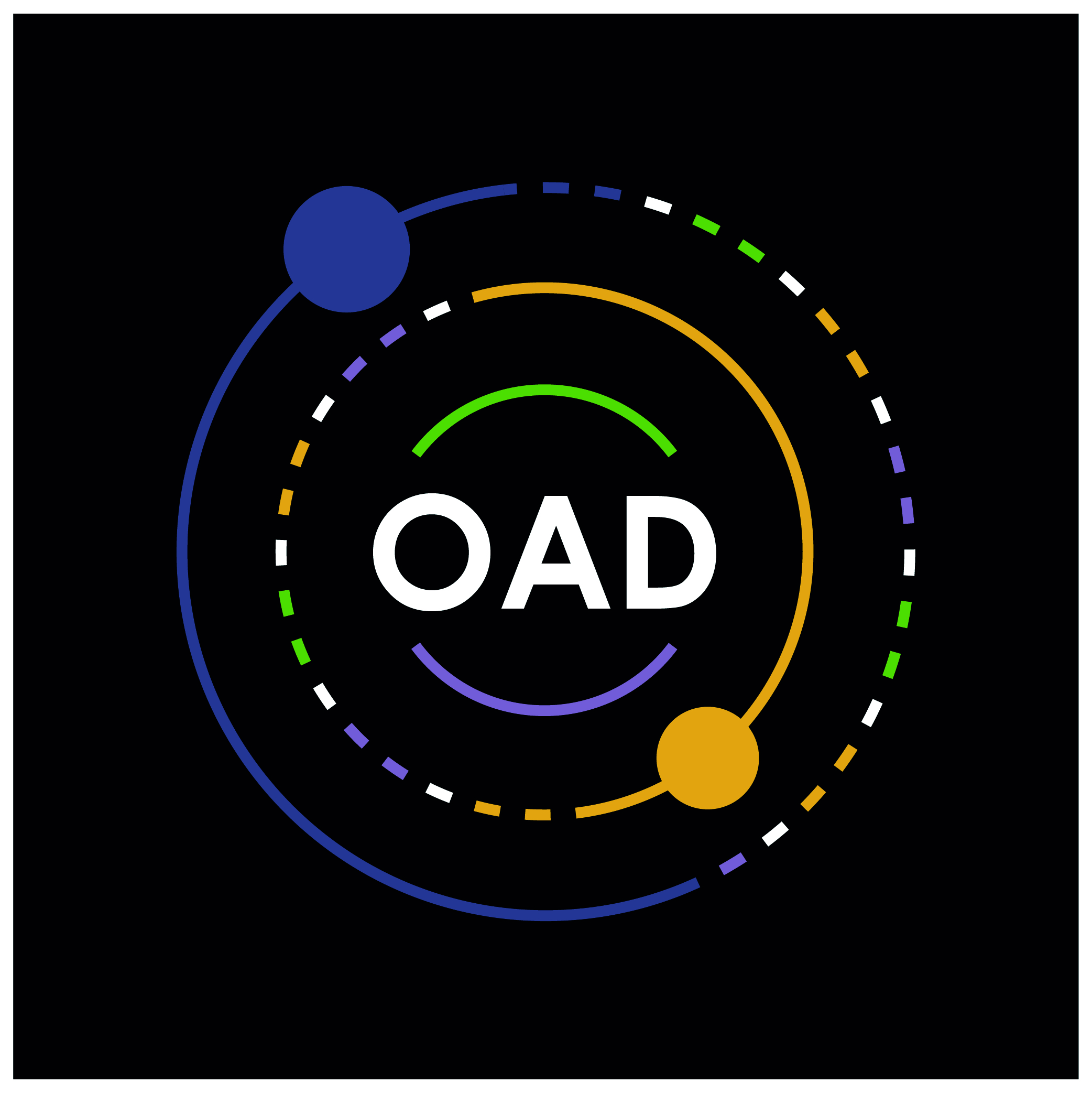Bringing Astronomy to Rural Communities of Colombia (BARCo) supported teachers in remote areas by providing hands-on astronomy resources designed for classrooms with limited infrastructure, often lacking labs, consistent electricity, or internet access. The project equipped educators with ready-to-use, engaging materials that make astronomy both accessible and exciting. By reaching historically underserved rural schools, including those in Indigenous, Afro-Colombian, and conflict-affected communities, BARCo showed students that they, too, can be part of exploring and understanding the Universe.
The project objectives included: equalising learning chances by putting low‑cost STEM resources in remote schools, boosting student curiosity about science through hands-on, context relevant activities, and building teacher confidence and interest, so astronomy can stay on the timetable long after the project ends as a tool for engaging students in science.
Context
The BARCo project reached an audience of ~2,000 school students across rural Colombia, in all 32 political-administrative regions, with at least two rural schools per region. Community surveys indicate that 54.5% of the students enrolled in the BARCo project belong to Indigenous and rural communities, representing 29.1% and 25.4%, respectively. Another significant group (17.1%) comprises Afro and Raizal communities, accounting for 13.4% and 3.7%, respectively. Additionally, 14.2% of participants are either victims of armed conflict (1.5%) or part of the migrant community (12.7%). Lastly, 14.2% of the students do not identify with any of these six groups. Furthermore, 84.2% of participants report experiencing social conflicts, whereas 15.8% state they have never been involved in such situations.
Regarding school attendance, 75.3% of students and teachers find it difficult to reach school daily, while 24.8% report no difficulties. Several factors contribute to these challenges, such as economic difficulties (14%) , lack of family support (5.7%), and other responsibilities (4.2%) in total 23.9%. On the other hand, the poor road infrastructure (27.6%) and insecurity in the trajectory (3.6%), totaling 31.2%, and finally, long distances (20.3%) combined with the lack of transportation (16.1%), totaling 36.4%. Only 8.3% of the students report no issues in reaching school.
About school conditions: 62.4% of schools have consistent access to basic utilities (electricity and water), while 25.7% experience intermittent access. 8.9% of schools have access to only one of the two services, and 3% lack both. Internet access is severely limited: only 10.9% have full access, 80.2% experience intermittent service (sometimes 61.4% and rarely 18.8%), and 8.9% have no connection at all. Furthermore, regarding toilet facilities: 56.4% of schools report good conditions, 35.6% have poor conditions, 2% lack access altogether, and 5.9% have limited conditions (sometimes the facility is not available). School meal programs: 73.3% of schools provide daily meals, 15.9% offer meals inconsistently, and 10.9% have no meal services.
Activities
The project engaged 110 schools across all 32 regions of Colombia, spanning 90 different cities. Given the vast geographical scope, WhatsApp served as the primary communication channel due to its accessibility and widespread preference among teachers.
- 110 astronomy boxes shipped, at least two to each of the 32 departments. Each box holds a Spanish activity booklet, star maps, experiment materials, a “Colombian Astronomy Bingo,” a card game on women scientists, and a USB with short video guides.
- Online briefings (recorded for slow‑connection areas) and a WhatsApp Community administered from a shared project phone. Teachers used it to consult on the activities and swap ideas.
- Students participated in the activities offered in the box guided by their teachers. Some of the activities included building a Solar System scaled to Colombia, mapping local constellations, crafting a “nebula in a jar,” and recording a classroom “Voyager Golden Record” that captures local identity.
Deliverables
- Glossary: A booklet that provides key definitions and tables of units to clarify any technicalities and accompany the activities.
- USB: This includes videos that explain step by step each of the activities, and with complementary material that explains astronomical concepts, to guide teachers who execute the activities and do not have internet access. These videos are also available on YouTube:
- Bingo game about astronomy in Colombia: Contains game instructions, 16 cards, and 3 cut-out pages with 21 characters, events, and places related to astronomy in the country.
- Card game “Mujeres que Inspiran” (Women who inspire): Includes instructions, 35 cards with the history of Colombian women scientists, six jokers representing areas of research, 19 challenge cards (easy, medium, and difficult), and a constellation board.
- General astronomy didactic (activity booklet + physical material for the activities): Contains a total of 6 activities, each detailed with the necessary materials, step-by-step instructions, feedback questions, and their answers, as well as supplementary material to support each activity.
-Solar System to scale distances and sizes: In this activity, we visualize the size of the solar system using a scale that represents Colombia.
-Local night sky: Know and identify your sky: It consists of a map of the sky showing the arrangement of stars and other celestial objects on a given date.
-Stellar Birth and Death: Nebula in a Jar: what a nebula is and its importance in astronomy, as the home of stars. In addition, it can remain as a decoration for the future.
-Galaxies and Cosmology: Discovering Our Cosmos: In this activity we will learn about the origin of the universe and how we know that it is expanding thanks to the observations of galaxies that astronomers have made in the last century.
-Atmospheres of other planets: Take care of your surroundings: In this activity we are going to focus on understanding how the atmospheres of exoplanets are studied to know what their composition is.
-Golden Record: What would you send into space to let aliens know about you?: Our goal is for students to connect with their roots and appreciate the diversity of the place where they are, questioning what it is that they would show to the whole Universe. - Game: Astronomical Connections- Students must create and explain connections between different astronomy concepts listed in the glossary.
Results
The BARCo project has had a meaningful impact on approximately 2,000 school students, ranging from 5 to 16 years old, as well as around 110 teachers across rural Colombia. Teachers have reported that the hands-on activities provided by the BARCo kit have enriched their teaching experience, with students and teachers expressing enthusiasm to be part of the project. Many of the schools are historically affected by past and ongoing armed conflict, difficult road access, and poor physical infrastructure and connectivity. We are reaching the entire country, even to regions near the borders. This includes schools with diverse nationalities, most frequently from Venezuela, Brazil and Perú, according to our partner teachers.
- 2 000 students (ages 5-16) and 140 teachers completed at least two activities; most covered five or more.
- Science or astronomy clubs established, and 86 schools that made part of the project in 2024 are continuing with the project
- 70 % of surveyed teachers report increased curiosity and more classroom questions amongst students. The horizon of possible dreams and vocations for many students was broadened, aspiring now to be scientists and astronauts.
- 88 % of teachers say they now use new methods learned from the kit; average ratings for clarity, relevance, and student engagement top 4.6 / 5. Many are eager to run the same lessons this year (2025) and have included them in the class plans.
In order to assess the outcomes of the project, 34 of the teachers were surveyed who showed the most commitment to developing the activities..
Outcome 1: Increased student interest, curiosity, and engagement in science and astronomy. Teachers across Colombia observed a marked rise in their students’ enthusiasm for science as a result of BARCo. Approximately 70% of teachers reported that students showed greater interest in science and astronomy, often accompanied by more curiosity and questions about the universe and more active participation in class. Many educators noted that previously disengaged children became eager to attend astronomy sessions and explore new concepts. In some cases, students even expressed new aspirations for science-related careers. “This year two students said they want to be astronauts, they ask a lot about astronomy classes, and that is a huge gain” (Original response: “Este año 2 estudiantes dijeron que quieren ser astronautas, preguntan mucho por las clases de astronomía y eso es una ganancia gigante”), one teacher remarked, highlighting how the project inspired students to dream big. This enthusiasm was observed in both boys and girls, reflecting the project’s effort to showcase diverse Colombian astronomers (including women) as role models. Overall, BARCo succeeded in sparking a love of astronomy and scientific inquiry among rural youth, many of whom had never before had the opportunity to engage in hands-on science learning. Students began to see astronomy not as an abstract topic from elsewhere, but as something exciting and attainable in their own context, fueling their motivation to learn more.
Outcome 2: Improved teacher confidence and capacity to teach STEM, leading to changes in classroom practice. The project significantly empowered teachers with knowledge, tools, and methods to incorporate astronomy into their teaching. An overwhelming majority (31 out of 34 surveyed teachers) reported positive changes in their pedagogy after using the BARCo toolkit. 74% of teachers said “me ha dado nuevas herramientas para enseñar” (it has given me new tools to teach), and over half noted “he modificado algunas estrategias didácticas” (I have modified some of my teaching strategies) to include what they learned. Only a few (roughly 9%) indicated no change in their teaching approach, underscoring that most educators gained confidence to try new techniques and activities. Teachers found the training materials extremely user-friendly and relevant – they rated the clarity of the content at 4.7/5 and the applicability in the classroom at 4.6/5 on average. Many educators commented that astronomy had previously been a topic “poco abordado por falta de insumos y conocimiento de los docentes” (rarely taught due to lack of materials and teacher knowledge), but with the BARCo kit’s rich resources, they felt equipped to bring the cosmos into their classrooms. The kit provided a variety of high-quality materials (rated 4.8/5), including printed guides, interactive games, experiment instructions, and explanatory videos, which gave teachers practical ways to engage students despite often limited lab equipment or internet. “I want to thank you for helping me awaken the sense of wonder both in myself and in the people I work with” (Original response: “Dar gracias por ayudarme a despertar el nivel de asombro tanto personal como de las personas con las cuales trabajo”), wrote one teacher, indicating that the project not only built their content knowledge and skills but also reignited their own passion for science. This increased teacher enthusiasm and capacity translates into more confident science instruction and enriched learning experiences for students now and in the future.
Outcome 3: Greater inclusion of rural, remote and underserved communities in science learning. BARCo successfully engaged students and teachers in some of Colombia’s most remote and marginalized regions, many of them rural areas affected by conflict and lacking connectivity. The program reached schools in all parts of the country – including Amazon, Pacific, and border regions – ensuring that children who previously had little access to STEM enrichment were finally “being counted” in science initiatives. Educators from these communities expressed that their students’ horizons have expanded by being exposed to astronomy. In areas with no internet or laboratories, the project’s offline materials and hands-on activities allowed science learning to take root. “It’s a fantastic project… I really hope you can continue providing projects like this where we can encourage students from these far-flung regions to get involved and create science” (Original response: “Es un proyecto fantástico… ojalá pudieran seguir brindando otros proyectos así donde podamos incentivar al estudiantado de estas regiones apartadas a vincularse y a crear ciencia”), wrote one teacher, emphasizing how important such opportunities are for isolated rural areas. Teachers were deeply appreciative that their schools were included despite the logistical challenges. One educator noted that the entire school community became “muy motivada y agradecida con el desarrollo de estas experiencias novedosas” (very motivated and grateful for these novel experiences). By bringing engaging astronomy activities to their villages and towns, BARCo helped bridge the urban-rural gap in science education in some of these institutions. Students in small rural schools – including indigenous and Afro-Colombian communities – could look at the night sky in a new light, connect it with educational content, and feel that they are part of a national science learning movement. Notably, the project content was contextualized to Colombia (highlighting local astronomers, observatories, and dark skies in their region), which helped students see science as relevant to their lives and culture. In summary, BARCo fostered a sense of inclusion and equity, reaching children who are often left behind and giving them the chance to participate in exciting STEM learning for the first time.
Outcome 4: Strengthened networks and peer support among educators. The project contributed to building a community of practice for astronomy education, connecting teachers both with the BARCo team and with each other. Throughout the implementation, teachers had access to continuous support and mentorship – for example, the BARCo coordinators were available via phone and WhatsApp to answer questions, despite the distances. This accompaniment was highly valued, with participants rating the support from the BARCo team 4.65/5. Beyond the official support, educators also began to share experiences and tips among themselves. Some teachers suggested organizing virtual meet-ups to exchange results and ideas across schools, indicating a desire for ongoing collaboration. Indeed, the project’s communication channels (including group chats and periodic check-ins) fostered a sense of solidarity. As one teacher highlighted, “what you are doing right now is great: getting us together, doing surveys, talking with us on WhatsApp, so that we become more committed to the activities” (Original response: “lo que están haciendo en este momento está súper bien: reunirnos, hacer encuestas, estarnos hablando por WhatsApp, para que nos comprometamos más con las actividades”). This peer engagement not only kept teachers motivated during the project but also laid the groundwork for a lasting network of rural science educators. Teachers no longer feel isolated in trying to teach astronomy – they know there is a broader community and resources they can lean on. This network-building is a critical outcome that can amplify the project’s impact, as educators continue to support each other and share knowledge beyond the formal end of BARCo. It also means that ideas and best practices introduced by the project can circulate to other schools through teacher-to-teacher communication, creating a multiplying effect in the region’s science education.
Outcome 5: Foundations for long-term sustainability and continued impact. The positive changes sparked by BARCo show strong signs of lasting beyond the project’s first year duration. Teachers are motivated to continue and even expand the astronomy activities with new student cohorts. Several educators indicated they plan to integrate the BARCo materials into their regular curriculum going forward or repeat the program with a new group of students. “I have really enjoyed the experience and I want to continue implementing it with 9th grade” (Original response: “Me ha gustado mucho la experiencia y quiero seguir implementando con el grado 9” ), one teacher noted, expressing a commitment to carry on with the same students as they advance to the next grade. Many participants recognize that sustained effort is key to cementing the gains from this project. “Excelente propuesta y acompañamiento… es importante continuar para que sea sostenible” (English: “Excellent initiative and support… it’s important to continue so that it is sustainable”), wrote one teacher in their final comments, echoing a common sentiment that the work begun by BARCo should persist. This mindset suggests that teachers and schools are taking ownership of the astronomy program. In fact, some educators have already considered obtaining additional resources (such as telescopes or extra materials) to enrich their astronomy teaching in the future. There is also growing interest from neighboring schools and other teachers – as one participant reported, “mis compañeros rurales están muy interesados en participar” (my fellow rural teachers are very interested in participating). This indicates a ripple effect that can lead to expansion of the program’s reach through local initiatives, even without immediate external funding. The project has thus built local capacity and enthusiasm that increase the likelihood of long-term impact. By empowering teachers, providing durable educational kits, and linking educators into a supportive network, BARCo has set in motion a self-sustaining dynamic. Going forward, these communities are better positioned to continue nurturing young people’s interest in science and to advocate for further support (from school administrations or other institutions) to keep astronomy education alive. In summary, the project not only achieved immediate outcomes in the classroom, but also created conditions for enduring educational and social benefits – a legacy of inspiration, skills, and connections that will continue to grow after the official project period. We are continuing to provide support and improve on the activities from the kit using the feedback we have gathered from the teachers.
Future
Several strategies are already in place to ensure the continuation of the project:
- Replication within schools: Participating schools have shown strong interest in replicating the astronomy activities with new student groups within their institutions. Teachers trained during the initial phase are committed to continuing the workshops using the educational kits provided.
- Formation of science clubs: Some schools are initiating permanent science or astronomy clubs inspired by their participation in the BARCO project. These clubs will provide a continuous space for students to explore astronomy and related sciences.
- Ongoing support and mentorship: We will maintain regular contact with the most active and motivated schools, offering virtual support, additional materials, and guidance. This network of engaged schools will help create a community of practice among rural educators interested in science outreach.
- Search for local and national partnerships: We are exploring collaborations with local universities, science centers, and education secretariats to integrate BARCO activities into broader educational initiatives and to secure long-term institutional support.


